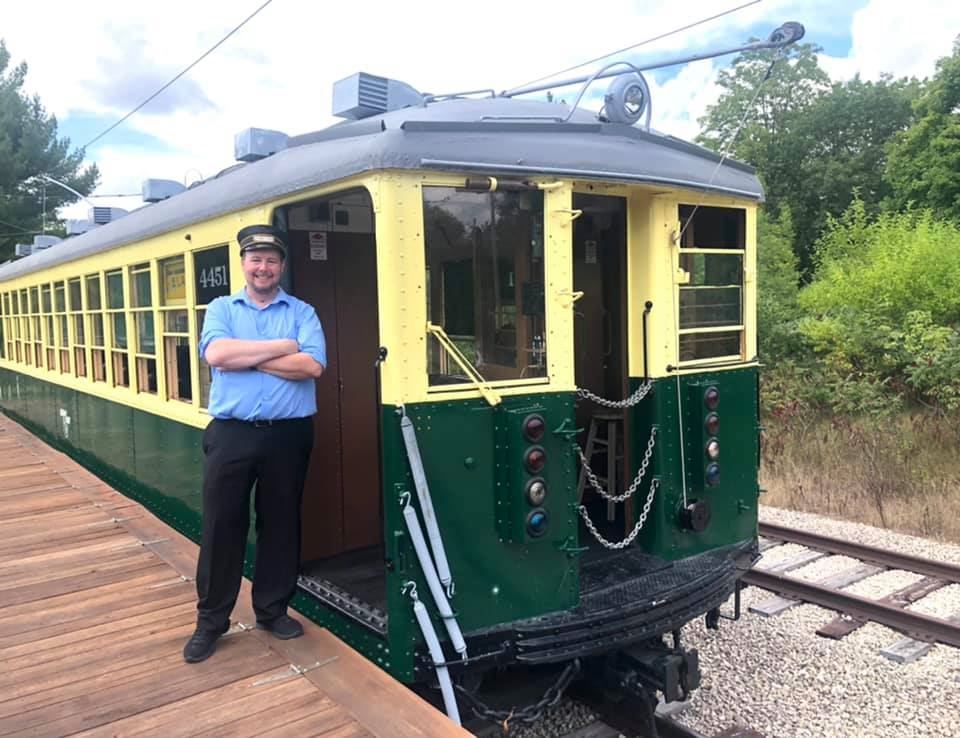
One of our new operators this season is Tom Albright standing next to newly restored 4451 at Blackhawk Station in the Jon Duerr Forest Preserve. Joseph Hazinski photo
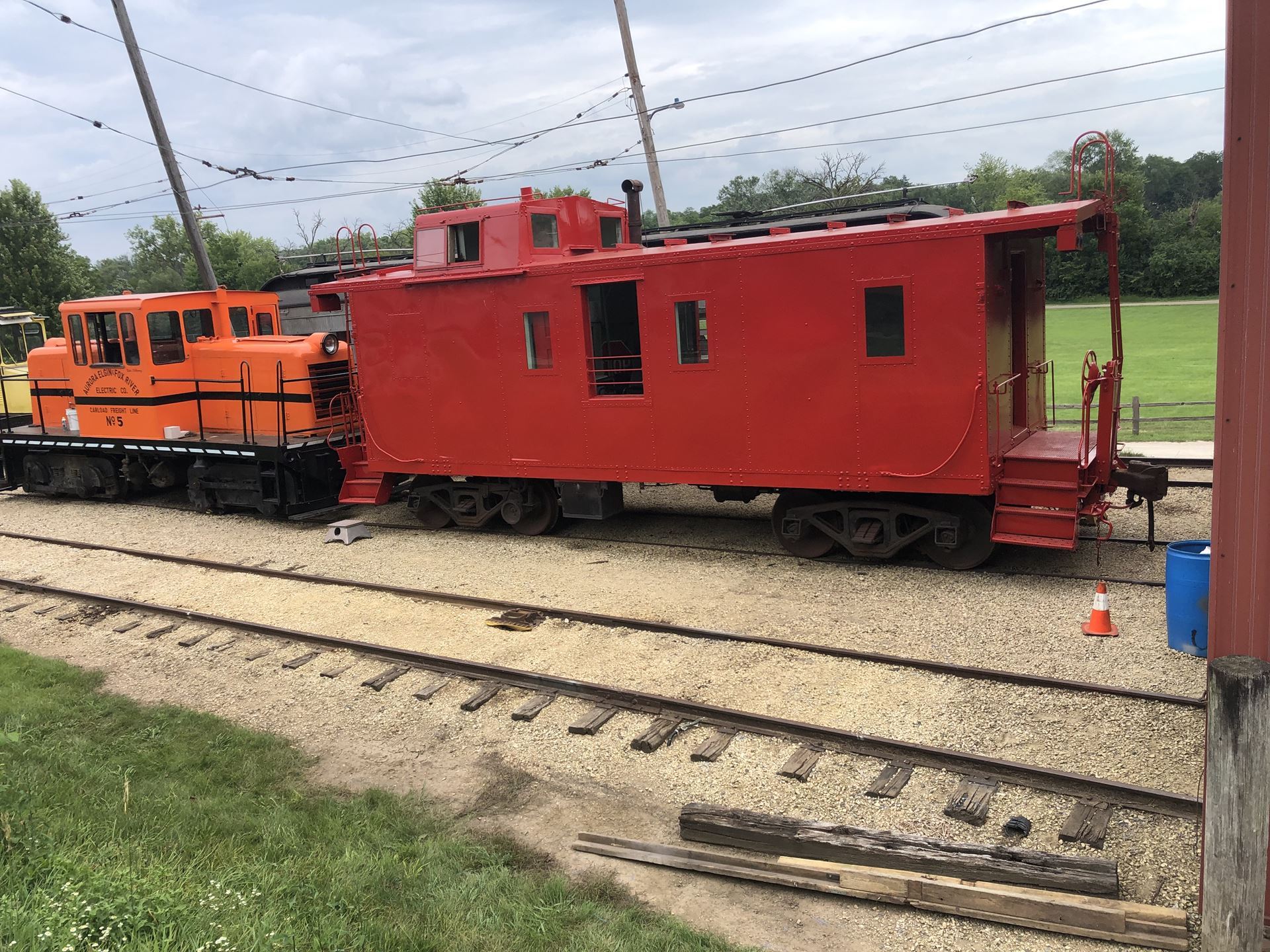
A very red IC caboose 9648 was finally pulled out of Track 4 in the car barn on August 21, 2021. Mike Gilles photo
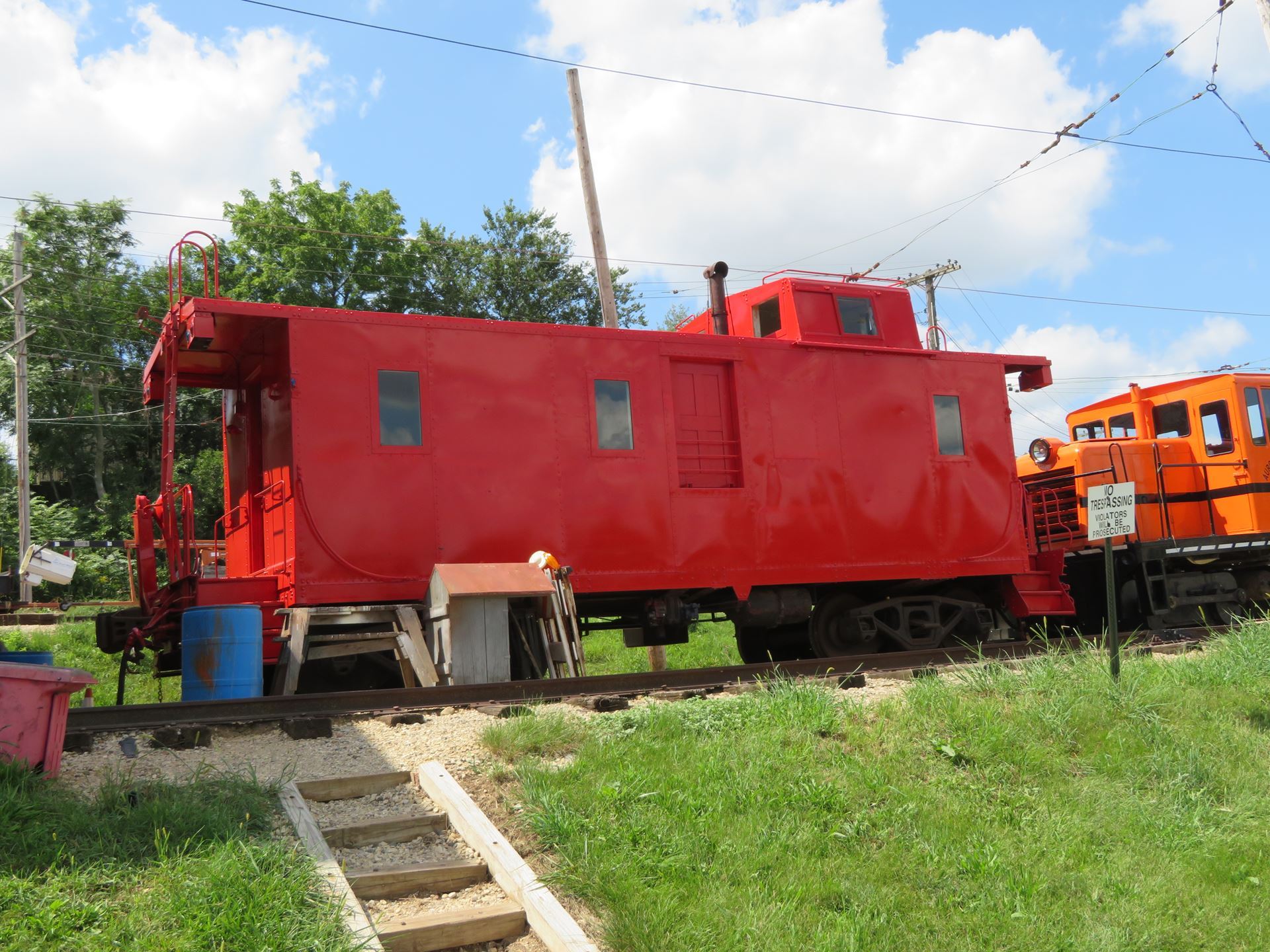
The next day I caught a view of 9648’s east side prior to final exterior improvements such as lettering and one missing cupola window. You can also see the window added on the north east side of the unit. Joseph Hazinski photo
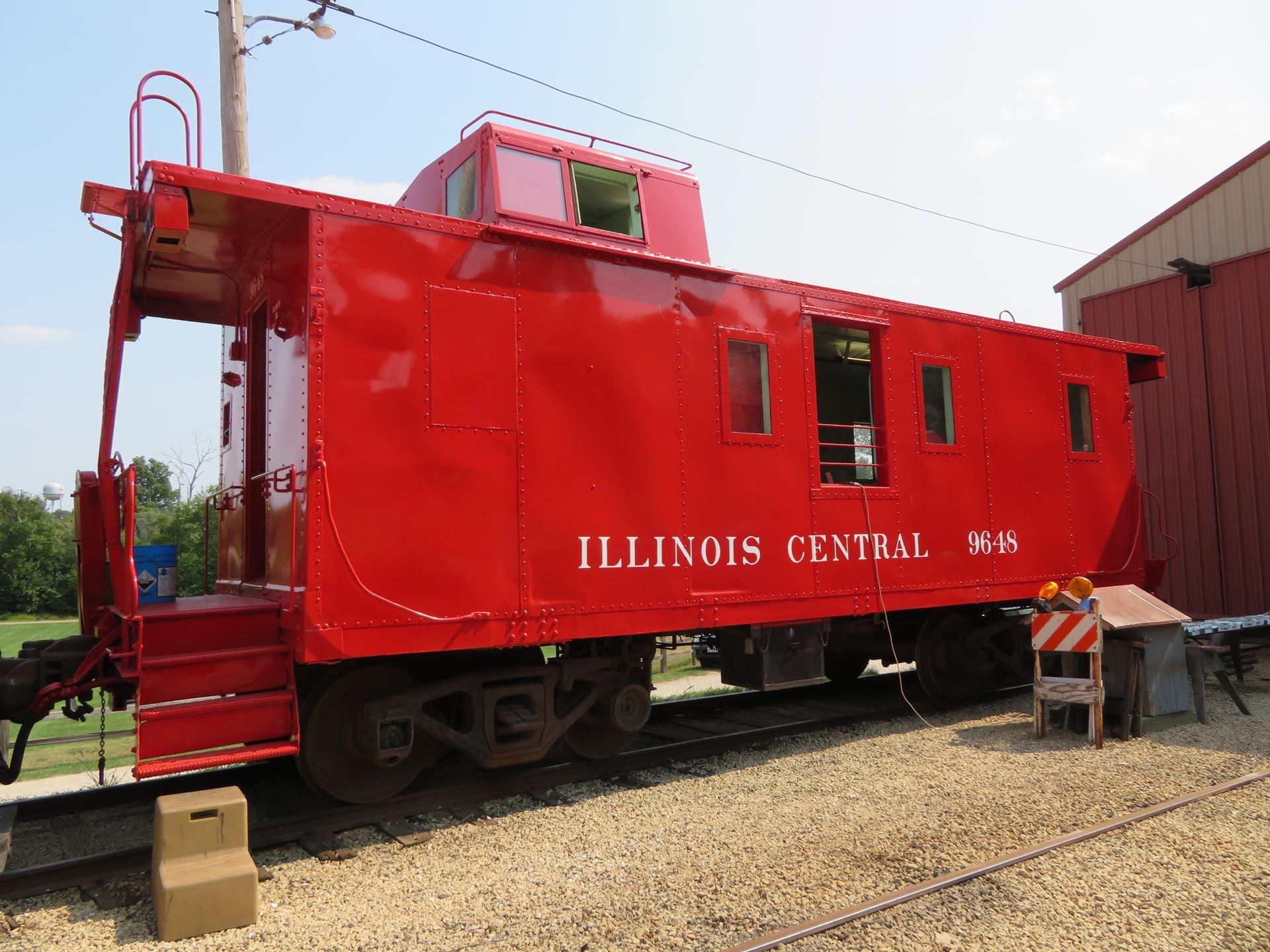
September 12th finds the exterior letter applied to the caboose with efforts going on to get the way car ready for passenger service. The restored side window is clearly evident on the west side. Joseph Hazinski photo
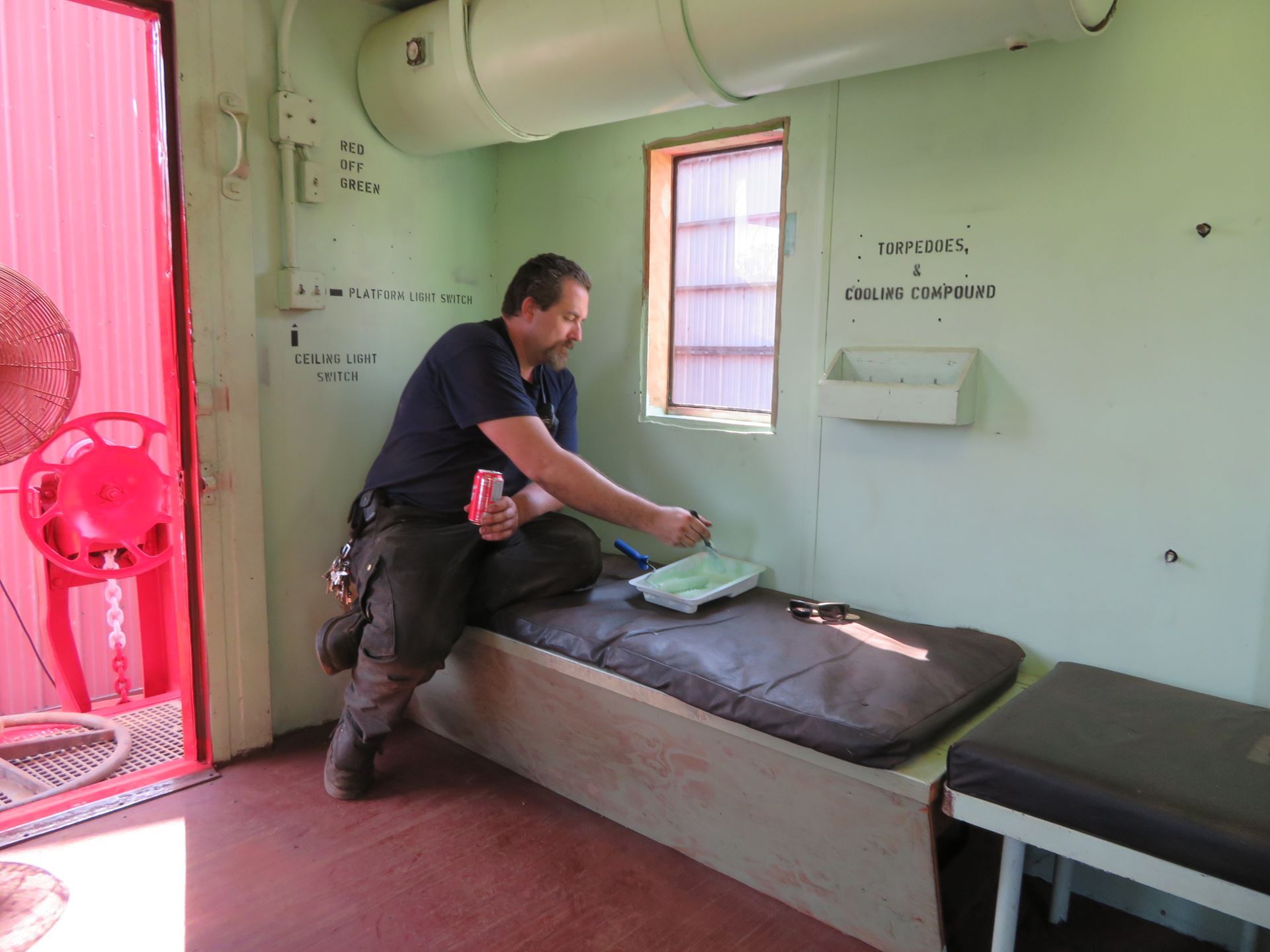
Jeff Bennett is applying paint to the interior wooden framing of this new window which took some extra effort to install as the interior wall paneling had to be cut open instead of just being un-plated. Joseph Hazinski photo

On the same day, Jeff, Fred Lonnes and Mike Gilles are installing the new ladder guard on the south or B End of the caboose. This new design is less obtrusive and can easily be unlocked when access is needed to the roof. This allows the car to be used as a work platform for overhead work when the need arises. Of course, the wire cannot be energized because of the metal roof which is why we have these safety guards in place. Joseph Hazinski photo
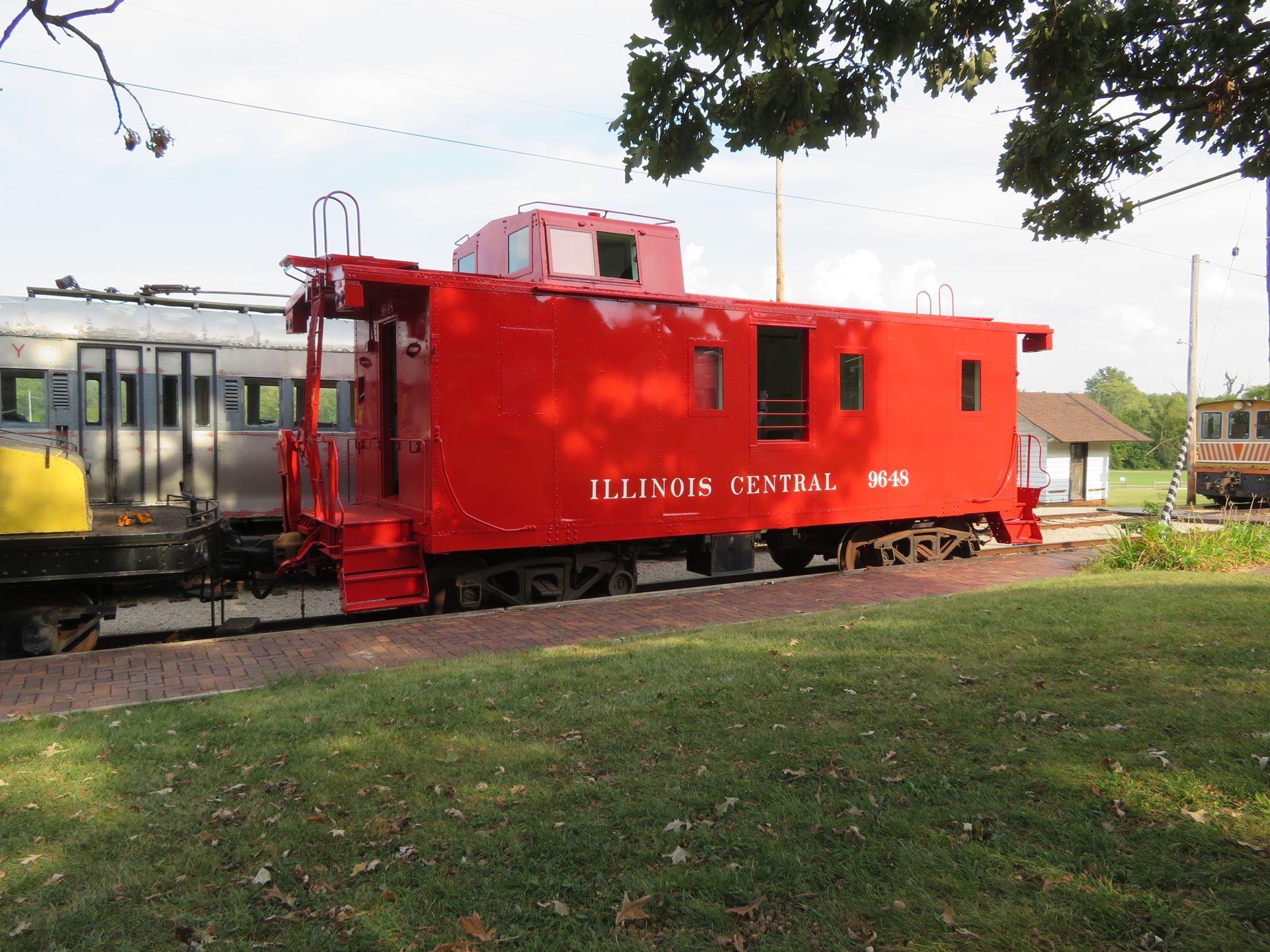
September 19th found 9648 in service with CTA L-202 pushing on the north end instead of its usual place on the south end. Joseph Hazinski photo
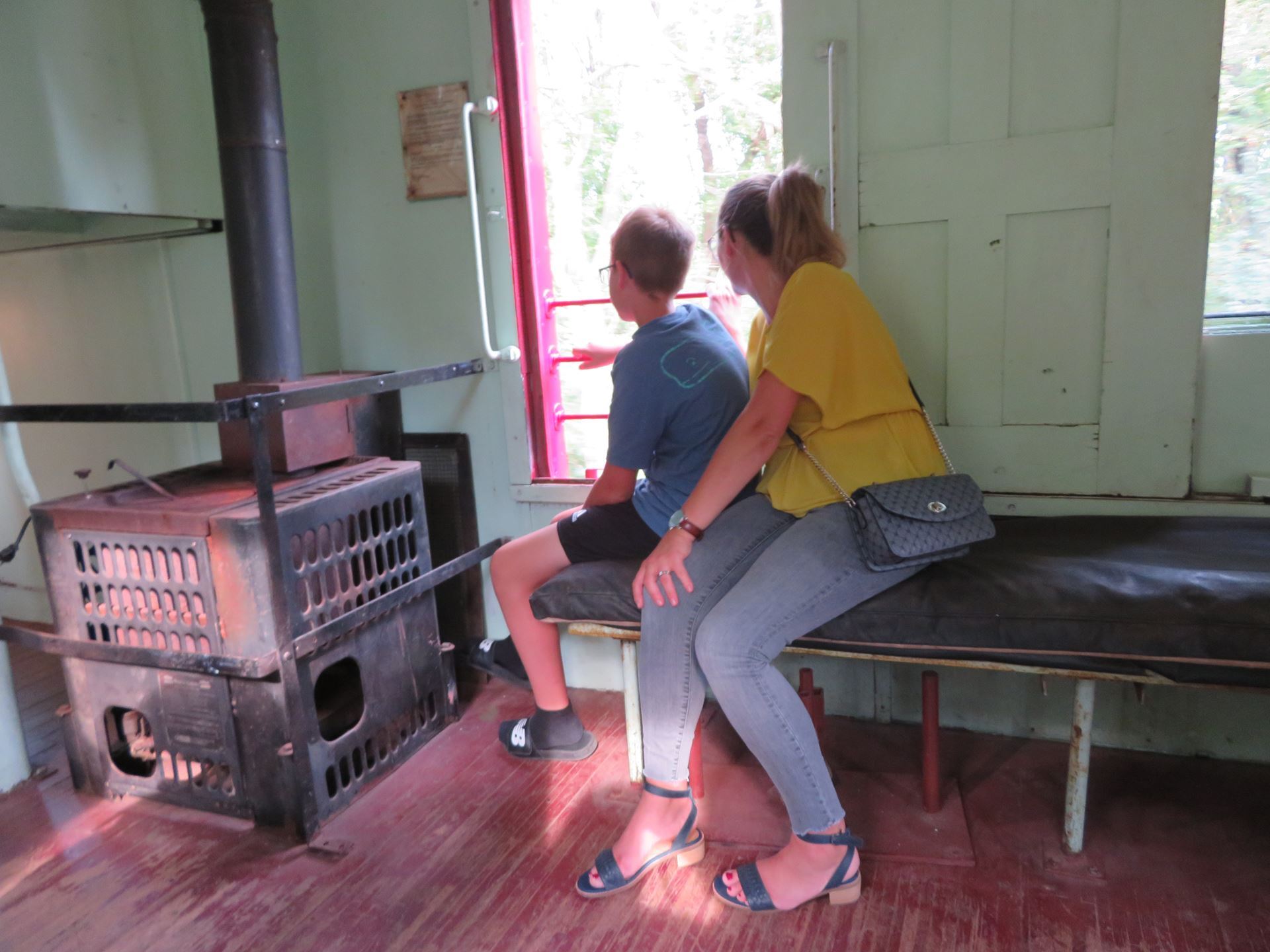
Here a mother and son take advantage of the unique side window to enjoy the view of the Fox River during the “Caboose Day” operations on September 19th. Joseph Hazinski photo
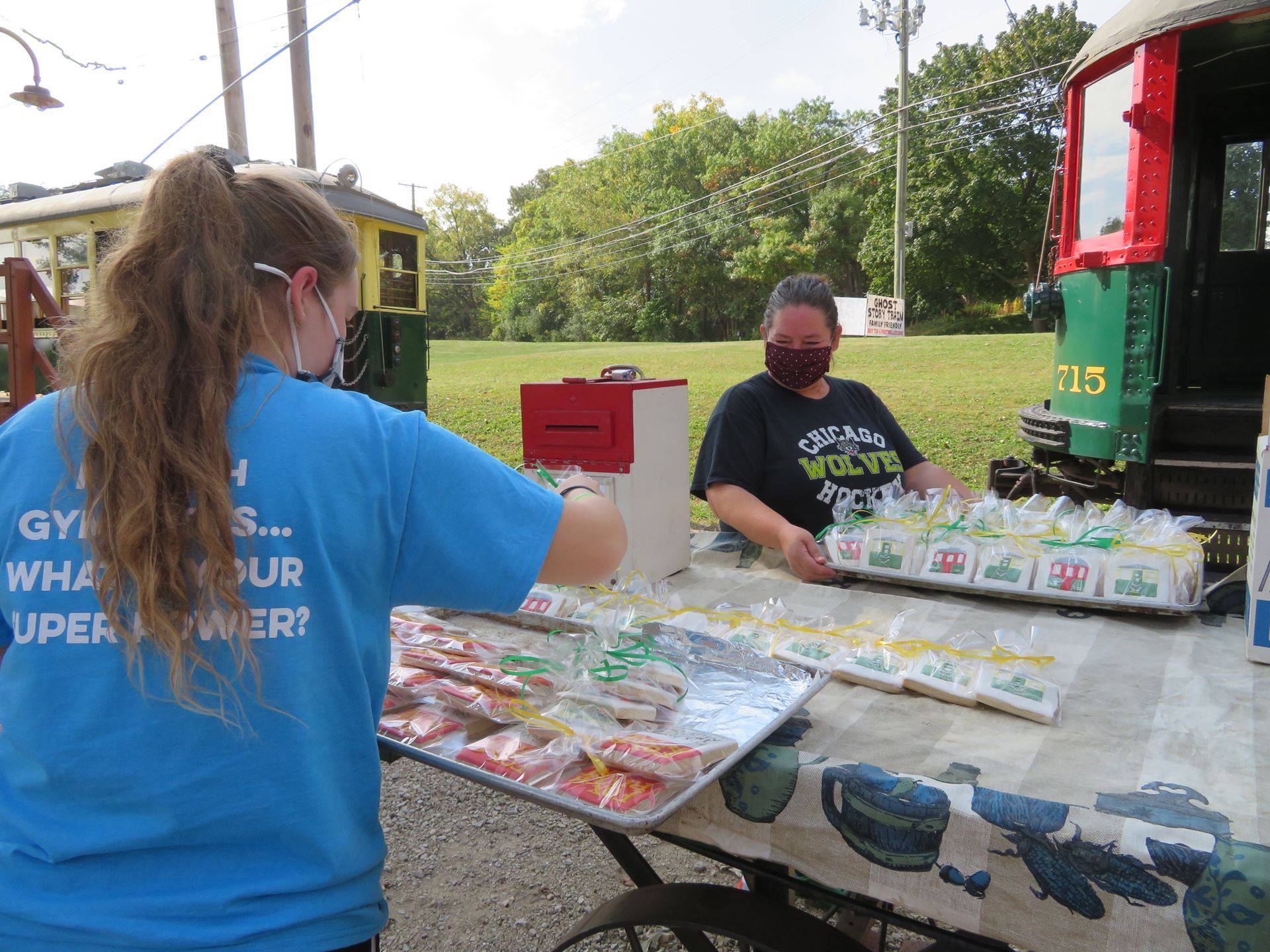
On Members Day, October 2nd, Katie Moulton and her mother put out specially decorated cookies for the annual event. Joseph Hazinski photo
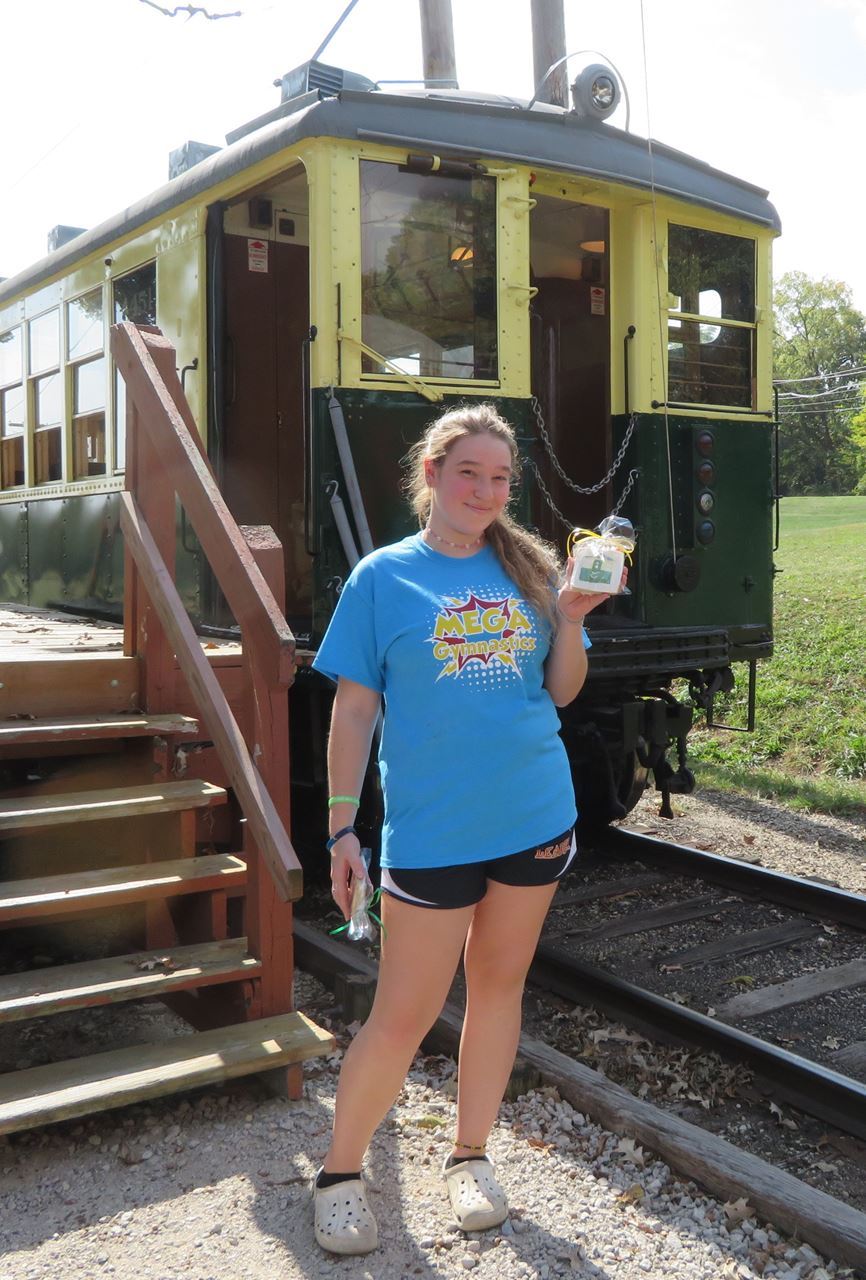
Here Katie poses with a 4451 cookie in front of the car. She also had a cookie depicting 715 and a third one that commemorated the day. She likes to bake and during the pandemic started a custom cookie business, making cookies decorated for special events. Joseph Hazinski photo
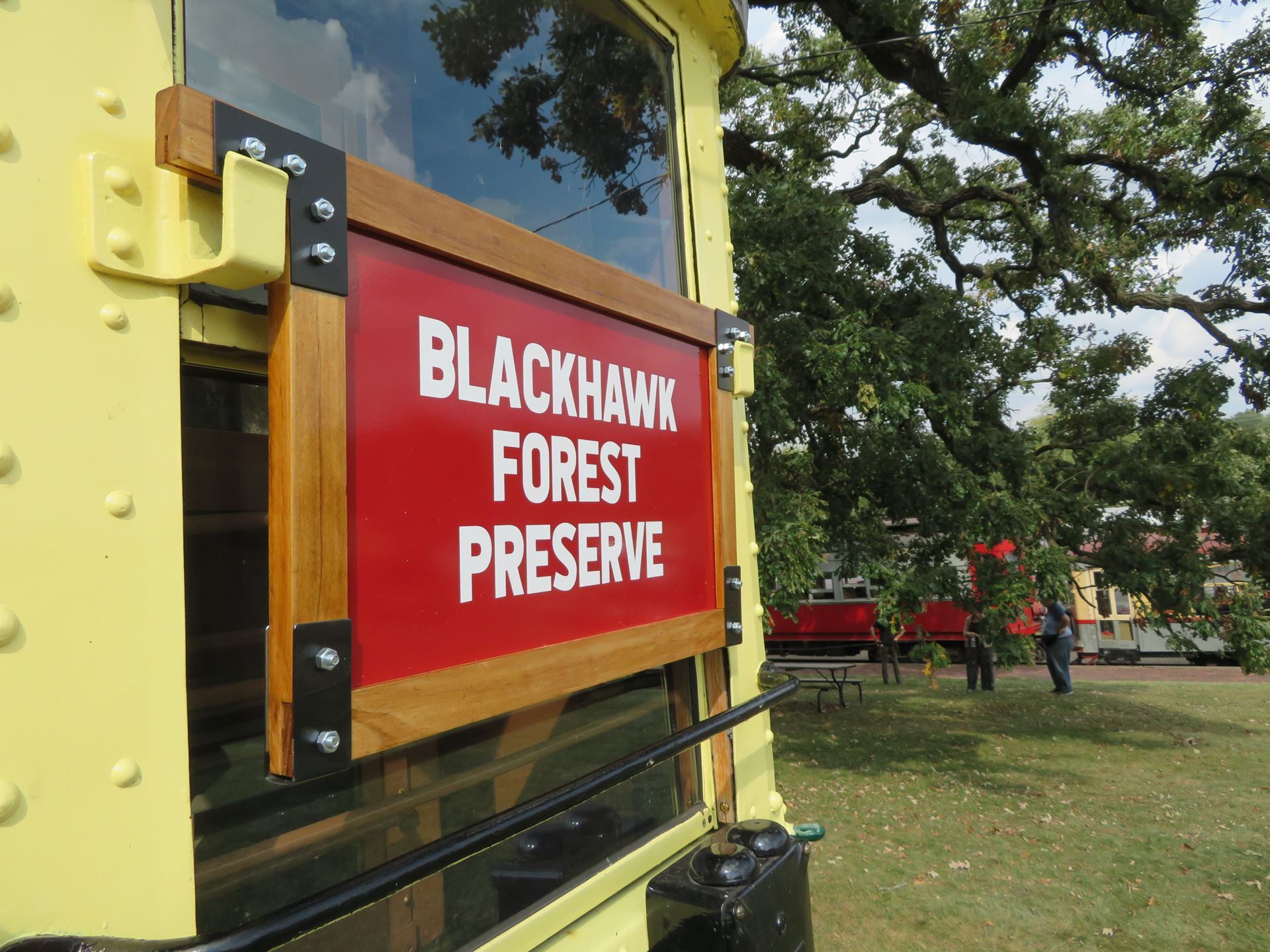
This is one of the three replica end signs for 4451 introduced to the membership. The other side of this sign reads HOWARD which celebrates the Evanston shuttle service the 4000’s covered prior to the arrival of the 1-50 series cars in 1959. Joseph Hazinski photo

On Members Day, October 2nd, 2021, Klaudiusz Kruszecki and his son enjoy a ride in 9648’s cupola. Joseph Hazinski photo
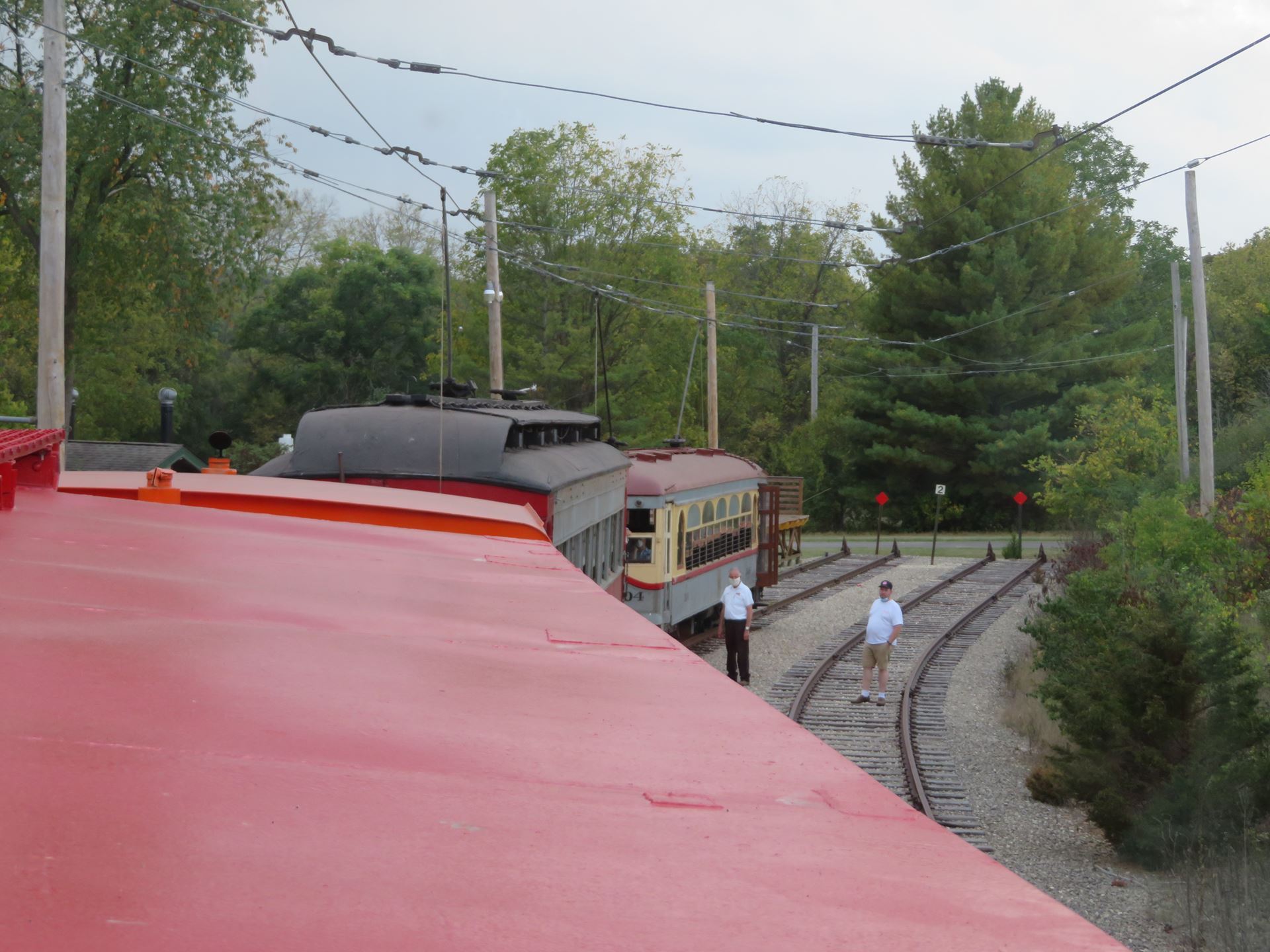
And this is the view from the cupola as we pull into Blackhawk with CA&E 20 and AE&FR 304 ahead of us during Members Day operations. This time AE&FR 5 is doing the pulling. Joseph Hazinski photo
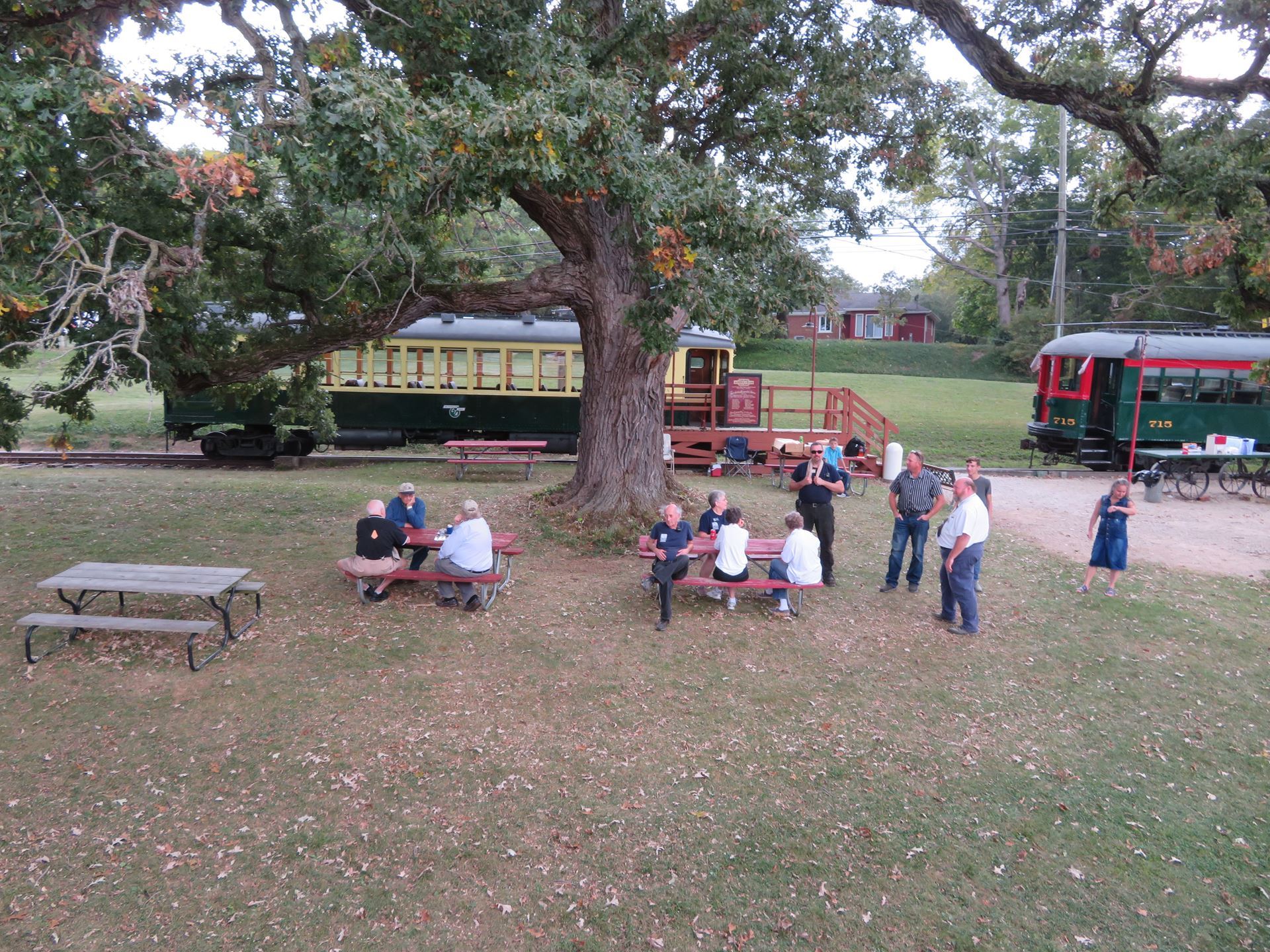
A view of Castlemuir from 9648’s cupola as Members Day activities winds down. Joseph Hazinski photo
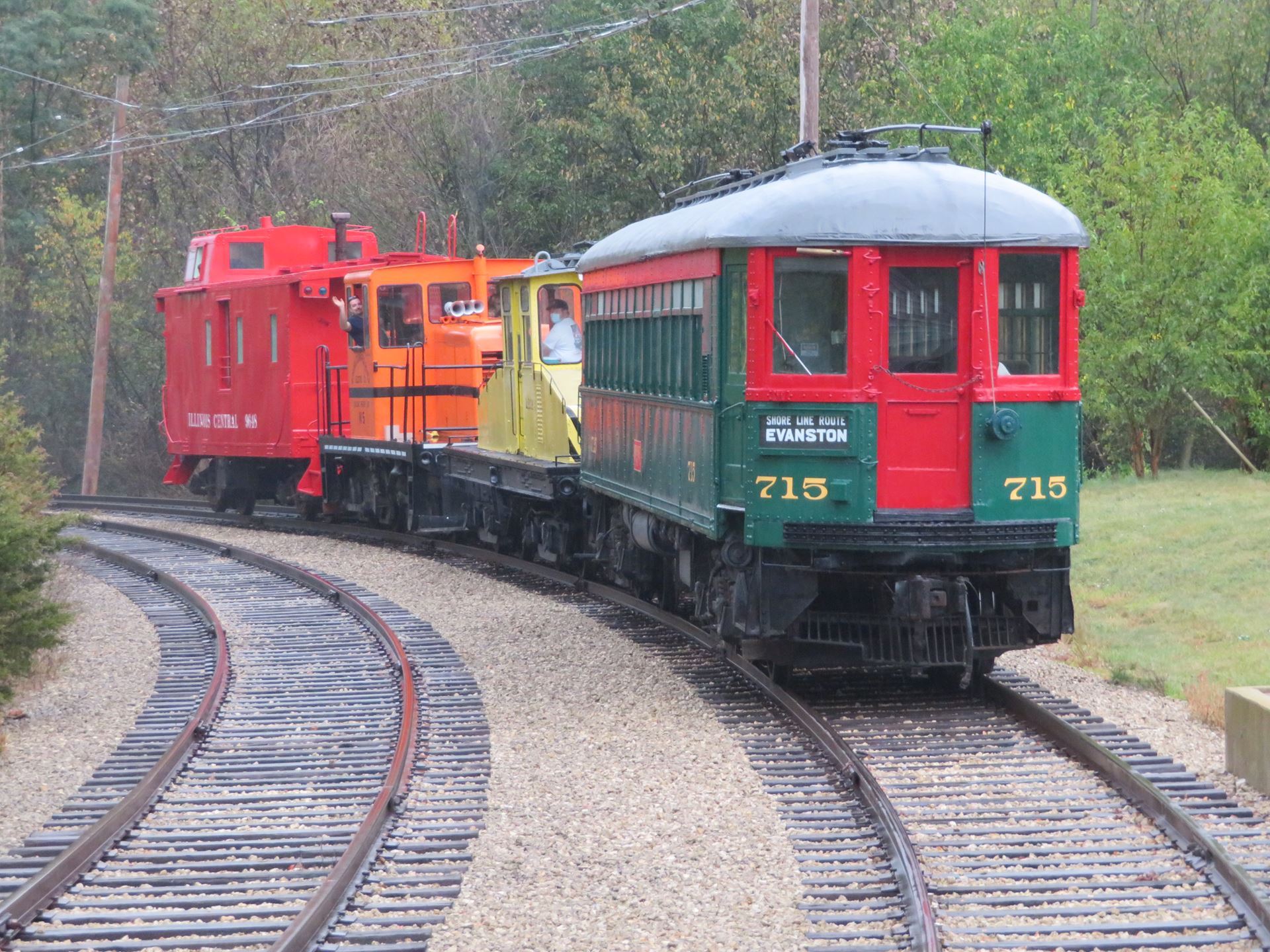
The clincher of Members Day operations was a passing thunderstorm, who’s lightning dictated that the 600-volt power be shut down. With the bulk of the operating cars at Blackhawk, locomotive #5, which had been towing the caboose, came to the rescue by towing L-202 and 715 back to South Elgin while pushing 9648. Traction power was restored after the storm passed so everything could be sorted out at Castlemuir. Joseph Hazinski photo
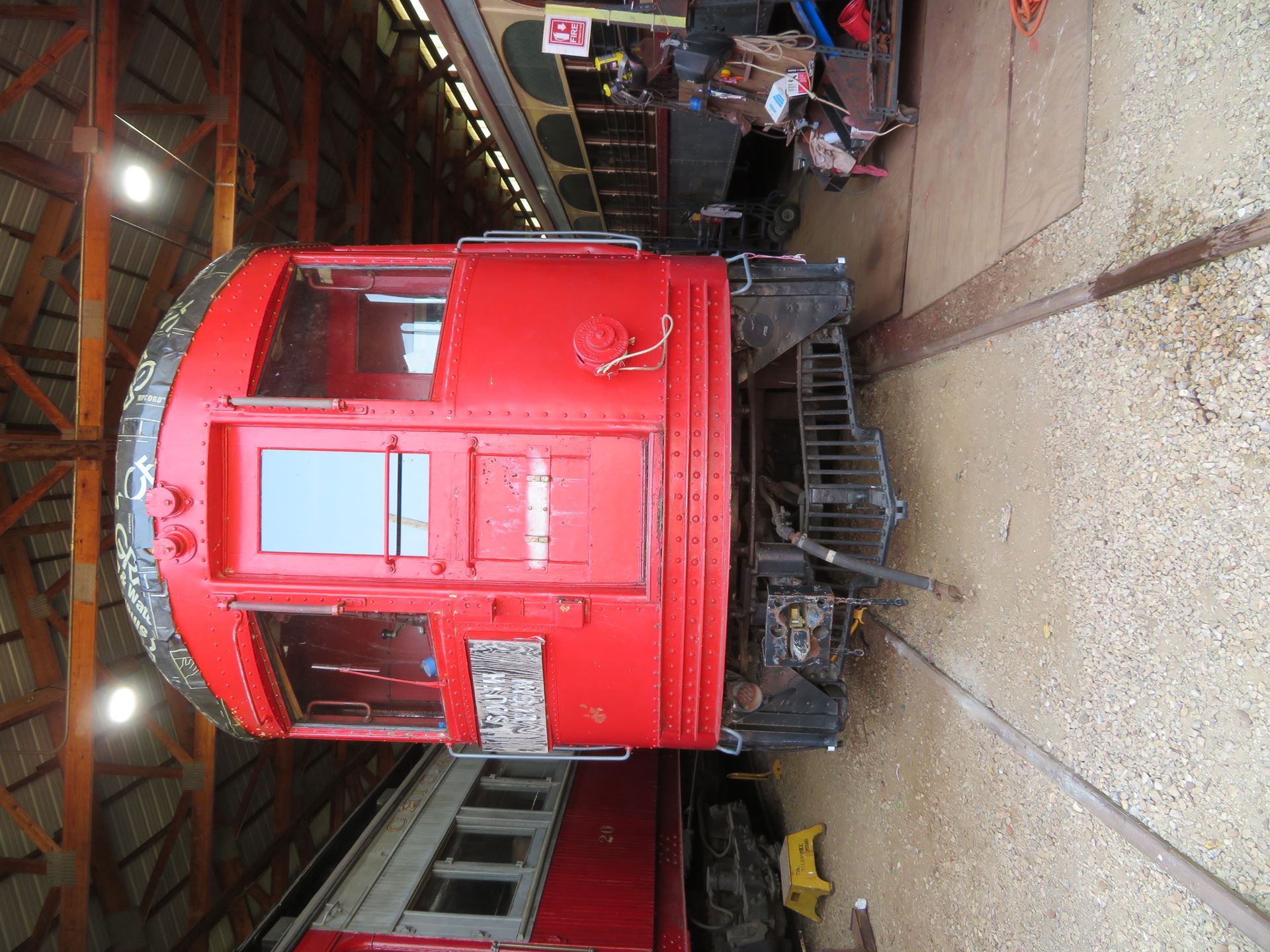
Back on September 11th, as soon as 9648 came out of the barn CA&E 458 went inside on Track 4, berthed next 20, one of the first CA&E cars. The well-worn temporary tarp was removed and discarded in the dumpster. Joseph Hazinski photo
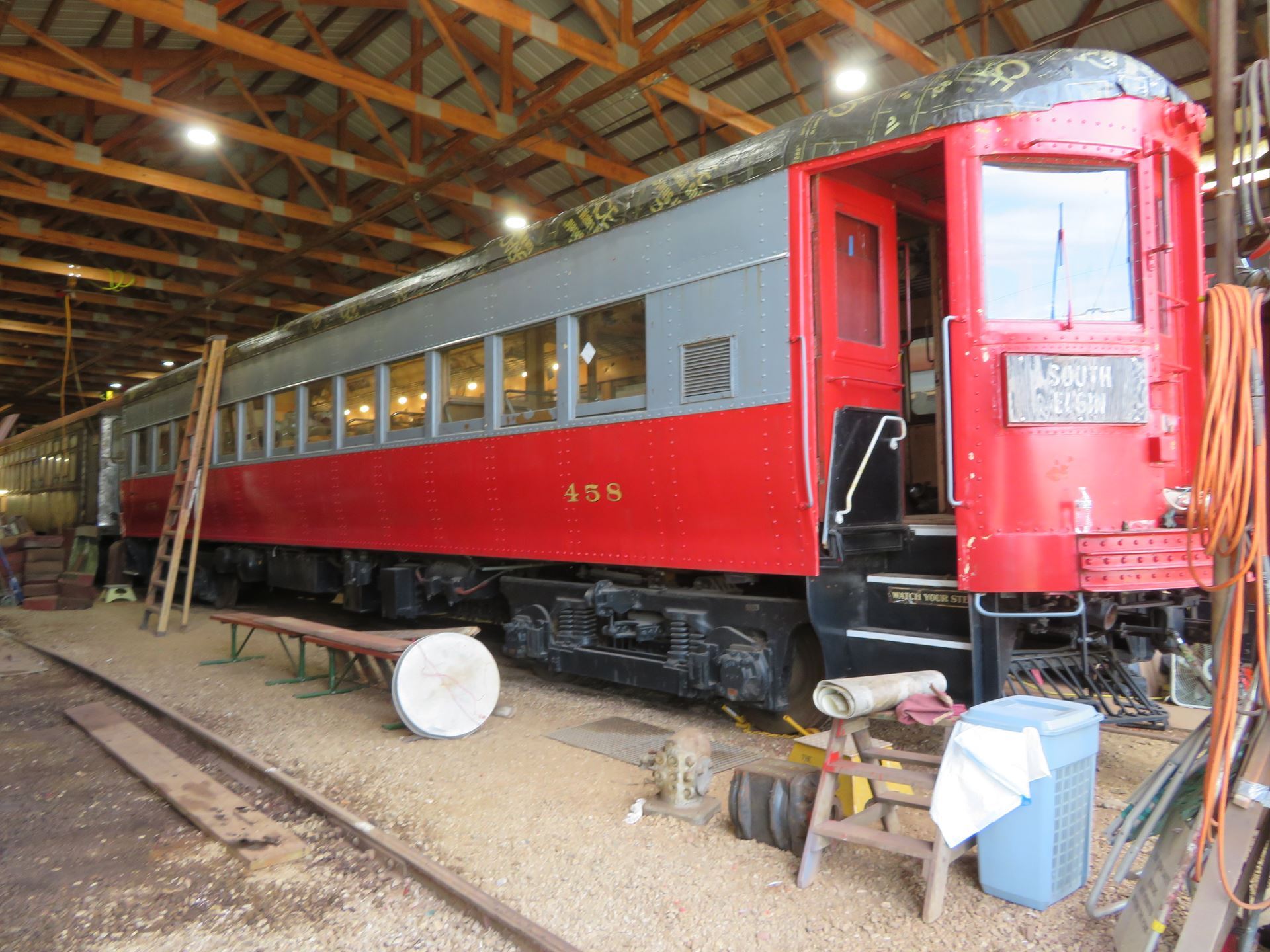
With car 20 making some regular demonstration runs we are able to get a view of 458, one of the last CA&E cars constructed. Joseph Hazinski photo
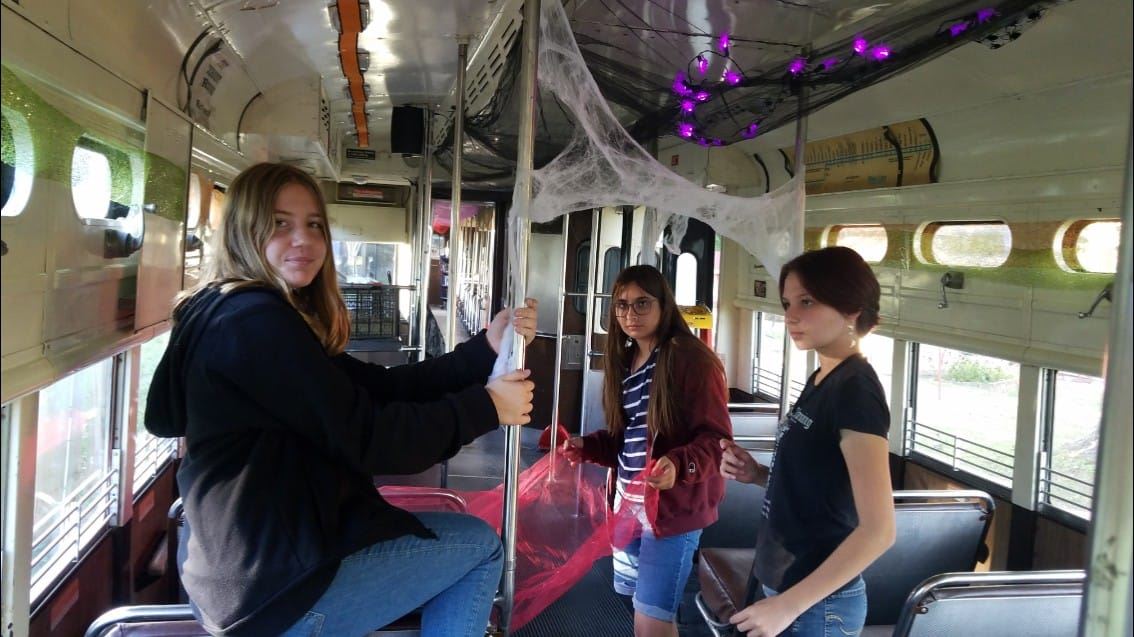
With the impending Ghost Story Train weekends, the Kruszecki family did their annual decorations of the interiors of CTA cars 40 and 43 on September 25th. Photographer unknown

I was intrigued by this spider themed display in Car 43. Each car had its own unique decorations to help get riders in the mood for our special event trips to hear the spooky tails told at the Jon Duerr Forest Preserve. Thanks to the Kruszecki family for their efforts. Joseph Hazinski photo
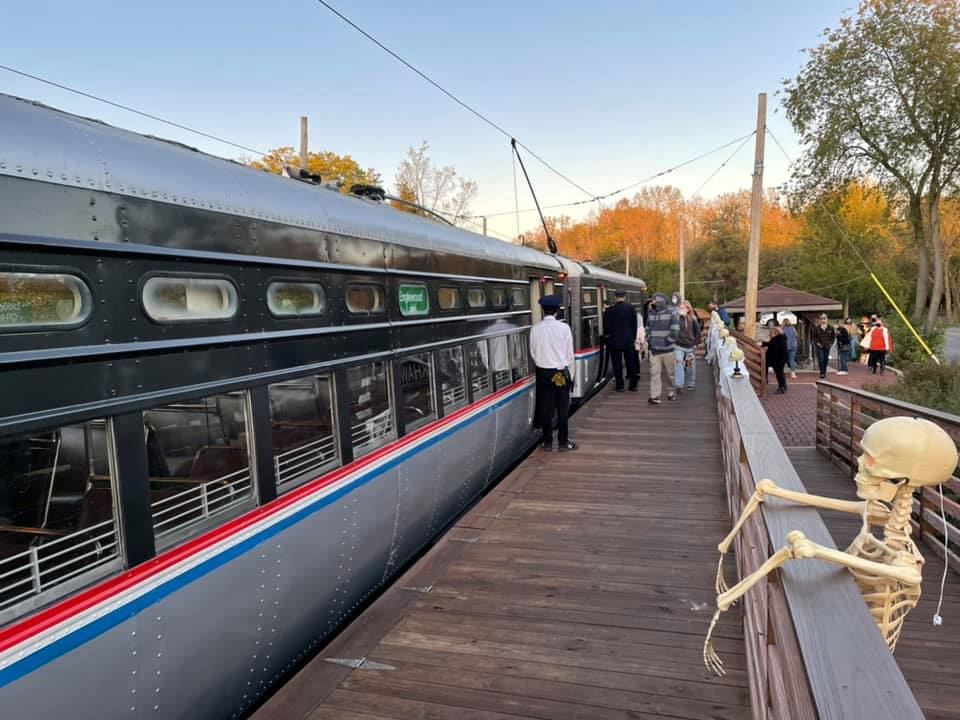
It’s Saturday October 16th and the first Ghost Story Train unloads at Blackhawk Station in the Jon Duerr Forest Preserve under the watchful eyes of a skeleton. George Barreto photo
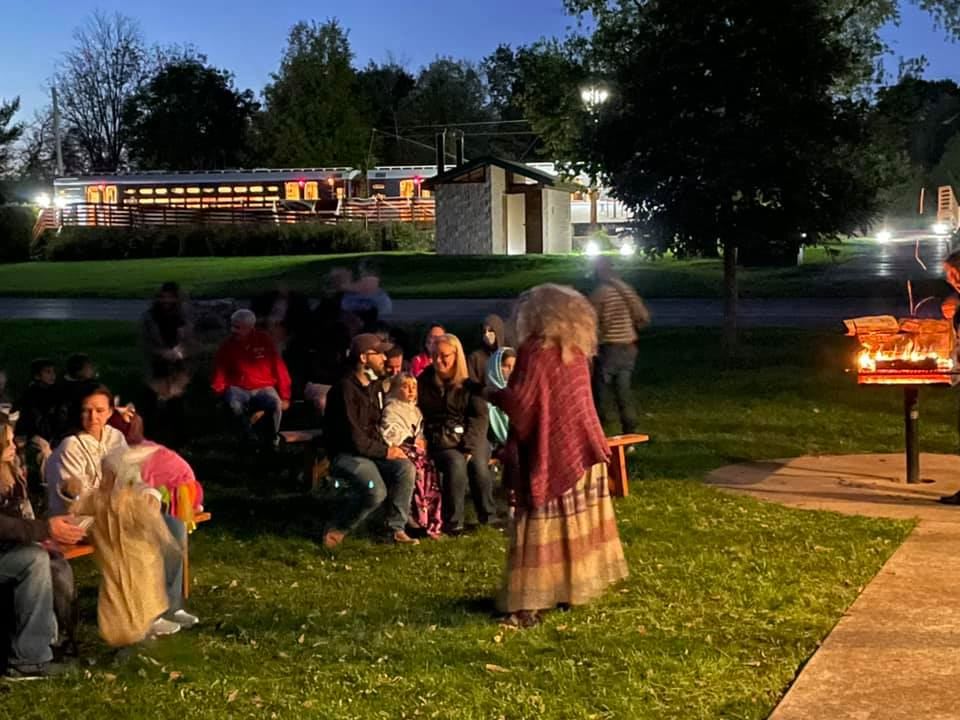
Our story teller spins her scary yarns to a spellbound audience. George Barreto photo
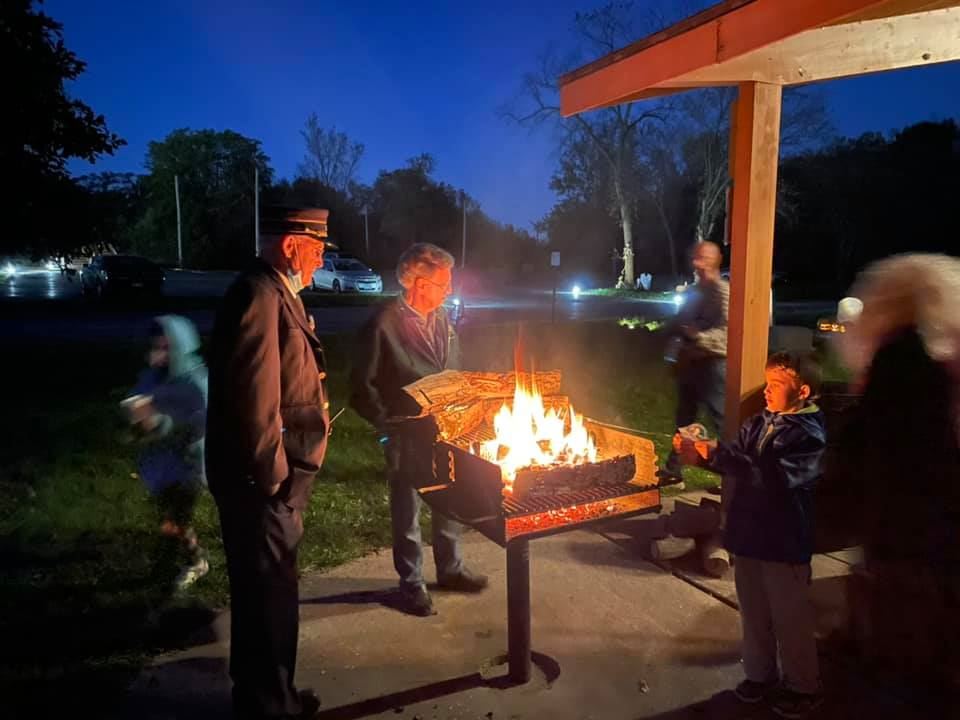
And of course after the spooky tails it is time to make Smore’s over the fire. Additional photos taken at Blackhawk can be seen on the museum’s Facebook page. George Barreto photo
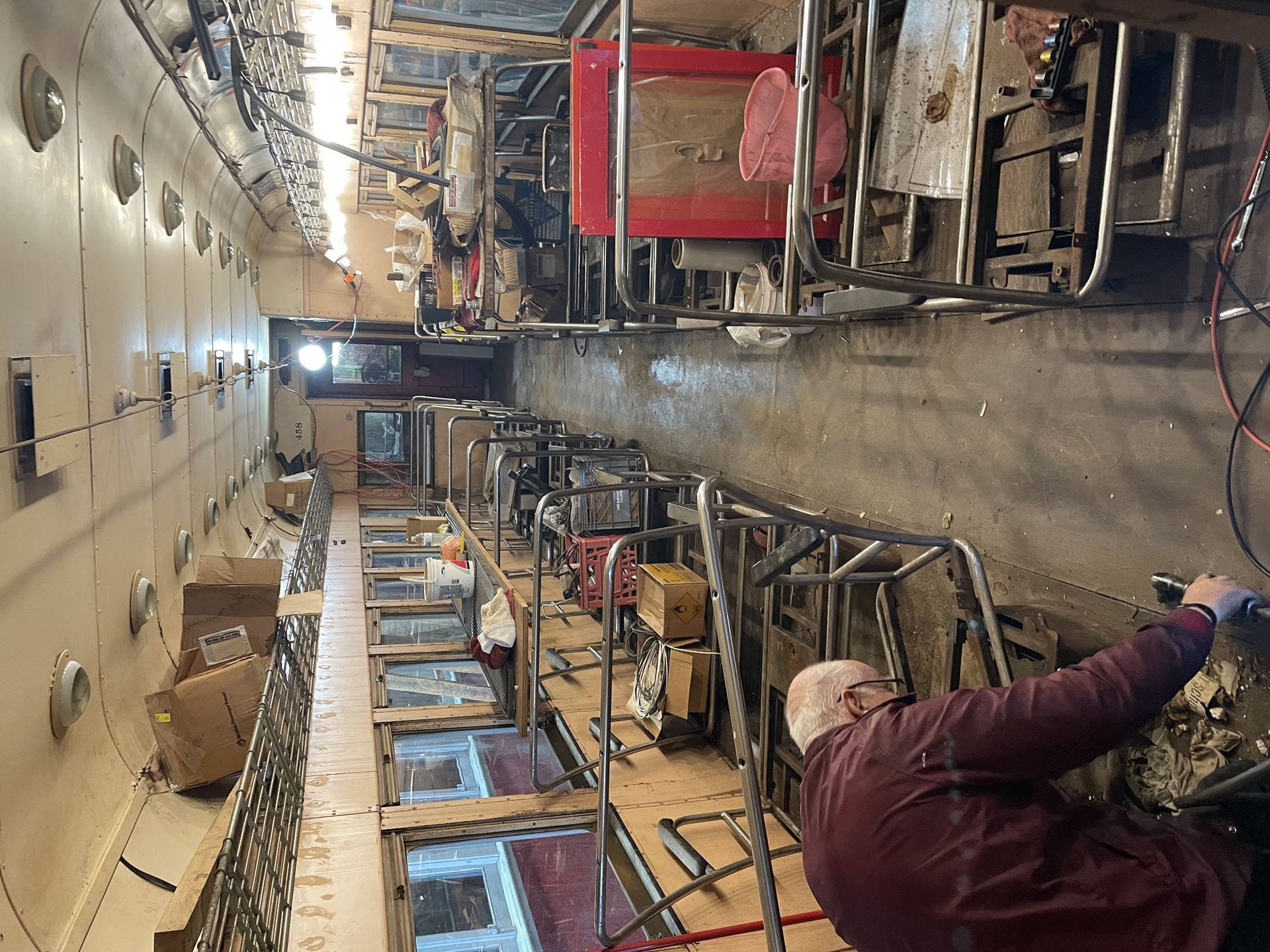
On October 23rd, Fred Biederman along with Jeff started the process of removal of the seat frames from 458. Along with removing the seats, the baggage racks are also coming down so that efforts can be started to prepare, prime and repaint the interior of the car. After that the next step will be to replace the linoleum flooring. Fortunately, the wood underneath appears to be in solid shape unlike the CTA 4000 cars. Jeff Bennett photo

458’s interior as of October 31st, with only three seat frames left that need to be detached, once the temporary work table can be put on saw horses. Canvas is on hand to cover both 458 and CTA 4288’s roofs. The encouraging thing about 458 is that all the necessary seat backs and seat cushions have been recovered and are in storage. With enough volunteer help to install the canvas and roof appliances, renew the interior and repaint the exterior, the museum can add another operating car to the fleet. The car can be heated during the winter season for inside work. Contact Jeff Bennett, Chief Car Officer, to find out when and how you can help. Joseph Hazinski photo

